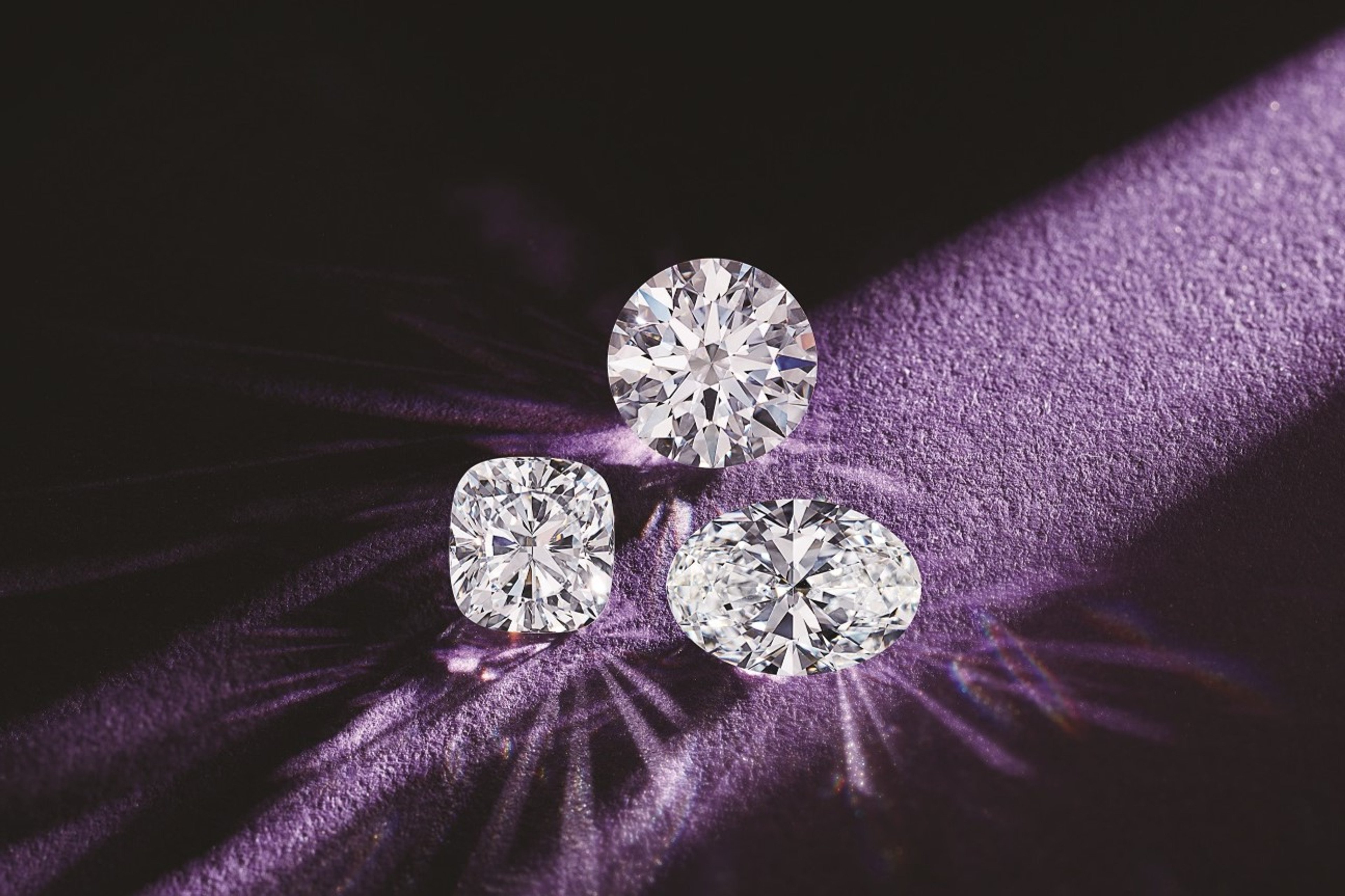Decisions, decisions. You found two amazing engagement rings for your significant other, and you’re torn over which to choose. One diamond has a slightly better color grade, and the other has slightly better clarity. Which should you pick? It really depends on the shape of your gem, and we’re here to tell you more!
What is Color?
But first, let’s define a couple of terms for you. Diamond color refers to the hue of your beautiful stone. It's rated on a 23-point scale that starts with “D” and ends with “Z” (light yellow or brown). Despite what you may think, the less color in a diamond, the better. That’s because a colorless diamond lets more light pass through the stone and creates more sparkle. Differences between color grades may not be visible to the untrained eye, but they affect a gem’s quality and price.
What is Clarity?
Diamond clarity refers to the purity of the stone. Most diamonds have imperfections, called blemishes and inclusions. Therefore diamonds with fewer imperfections will have better clarity and more sparkle.
What’s the difference between a blemish and an inclusion? Blemishes are imperfections on the outside of the diamond, such as abrasions, scratches, polish lines and burn marks. Inclusions, on the other hand, developed when the diamond first formed and can be found inside of the stone. Similar to color, trained diamond graders follow the Gemological Institute of America’s (GIA) Diamond Clarity Scale to rank stones.
Diamond Color vs. Clarity
Which should you prioritize when shopping for your diamond ring? Imperfections are less visible in certain diamond shapes. Let’s find out more!
Round – COLOR
● Want the brightest round stone you can find? If so, color is more important here. Due to their cut, these gems reflect light better than other diamond shapes. And you wouldn’t want hints of yellow interfering with all of that beautiful sparkle. Jewelry experts recommend choosing diamonds that have D-J color ratings, as they appear colorless to the naked eye.
● When it comes to clarity, round diamonds are pretty good at hiding those internal imperfections (aka inclusions). So, you can opt for a diamond that scores a bit lower on the clarity scale, such as SI1 or SI2, and it will likely still look flawless.
Oval – COLOR
● Since ovals are basically elongated versions of round diamonds, some of the same rules apply. If you’re shopping for an oval stone, definitely pay attention to color over clarity. Select a diamond with a D-H color rating, and you’ll likely only see colorless sparkle.
● Just like round diamonds, ovals also hide inclusions well. So, you can pick a gem with an SI1 or SI2 clarity grade.
Princess – CLARITY
● Imperfections usually aren’t noticeable in a princess diamond. But given this stone’s square edges, it’s more vulnerable to chips and scratches. Therefore, you’ll want to pay more attention to clarity than color.
● Experts suggest sticking with princess stones that fall between the D and I range on the color grading scale.
Pear – COLOR
● Keep an eye on color in pear-shaped diamonds, as shades of yellow sparkle are sometimes spotted in an otherwise flawless stone, especially near the tip. If you’re considering white gold or platinum for your engagement ring, your diamond shouldn’t go below an H rating on the color scale. But if you prefer a yellow or rose gold look, a K-rated diamond will still pair nicely and save you a few bucks.
● Much like the other diamond shapes so far, experts recommend pear stones with an SI1 or SI2 clarity grade.
Cushion – COLOR
● Color should be the focus for cushion diamonds too. Why? They’re more apt to show some of those natural yellow and brown tones than other gem shapes. But stones with color gradings of H or better should appear colorless to the average eye.
● As for clarity, keep in mind that cushion diamonds feature large, flat surfaces (aka tables), making it easier to notice imperfections. To avoid obvious marks, steer clear of gems that fall below an SI1 clarity grade.
Radiant – CLARITY
● This type of diamond features plenty of flat surfaces (aka facets), and their placement ultimately affects a stone’s sparkle. The clearer the stone, the more it will shimmer. So, you’ll definitely want to pay attention to clarity. For reference, experts say you can choose a gem with an SI1 or SI2 clarity grade, and it will likely still look flawless.
● Since color is also an important characteristic for radiant diamonds, you’ll want to pick a stone that receives a D-H rating on the color scale. That way, your engagement ring will shine even brighter!
Emerald – COLOR
● Emerald-shaped diamonds often resemble real emeralds with their rectangular look and long, clean lines. This shape was created to highlight the striking shade of these green beauties, and it will therefore do the same for diamonds. So, prioritize color when shopping! A diamond with a D-H color ranking is an ideal choice.
● You’ll also want to keep a close eye on the stone’s clarity, since imperfections tend to be more noticeable in emerald-shaped diamonds. If you’re eyeing this type of gem, you should choose a VS2 or higher clarity grade.
Asscher – CLARITY
● Asscher diamonds are essentially square versions of emerald diamonds. So, clarity is definitely important here. And just like emerald diamonds, you should opt for an asscher diamond with at least a VS2 clarity grade.
● If you’re looking to stretch your budget, focus on gems that fall between D and I on the color scale, particularly I-rated gems.
Pro Tips
● Remember, these are general guidelines across the jewelry industry. You’ll ultimately want to inspect each stone yourself and make sure it works for your budget.
● Want to save a few bucks? Consider pairing a yellow-tinted diamond with a yellow or rose gold band. The colored band will mask some of the gem’s yellow hues, making it look colorless overall.
● If you settle on an engagement ring setting with a halo or side stones, make sure your center and side stones have similar color grades (ex. no more than two grades apart). Otherwise, you’ll start to notice a difference in color.
Have a question? We can help!
Gage Diamonds is Chicago's premier jewelry showroom and online retailer of engagement rings, wedding bands, and fine jewelry. We offer a selection of dazzling handpicked diamonds, including certified natural and lab grown diamonds in a variety of shapes.
We’re committed to helping you find the ring of your dreams. For inspiration, browse our website or set up an appointment with a member of our trusted staff at our in-person showroom.
We offer no-credit-needed financing – feel free to apply and get your approval within 24 hours!
Pay over time, because love shouldn’t wait.

